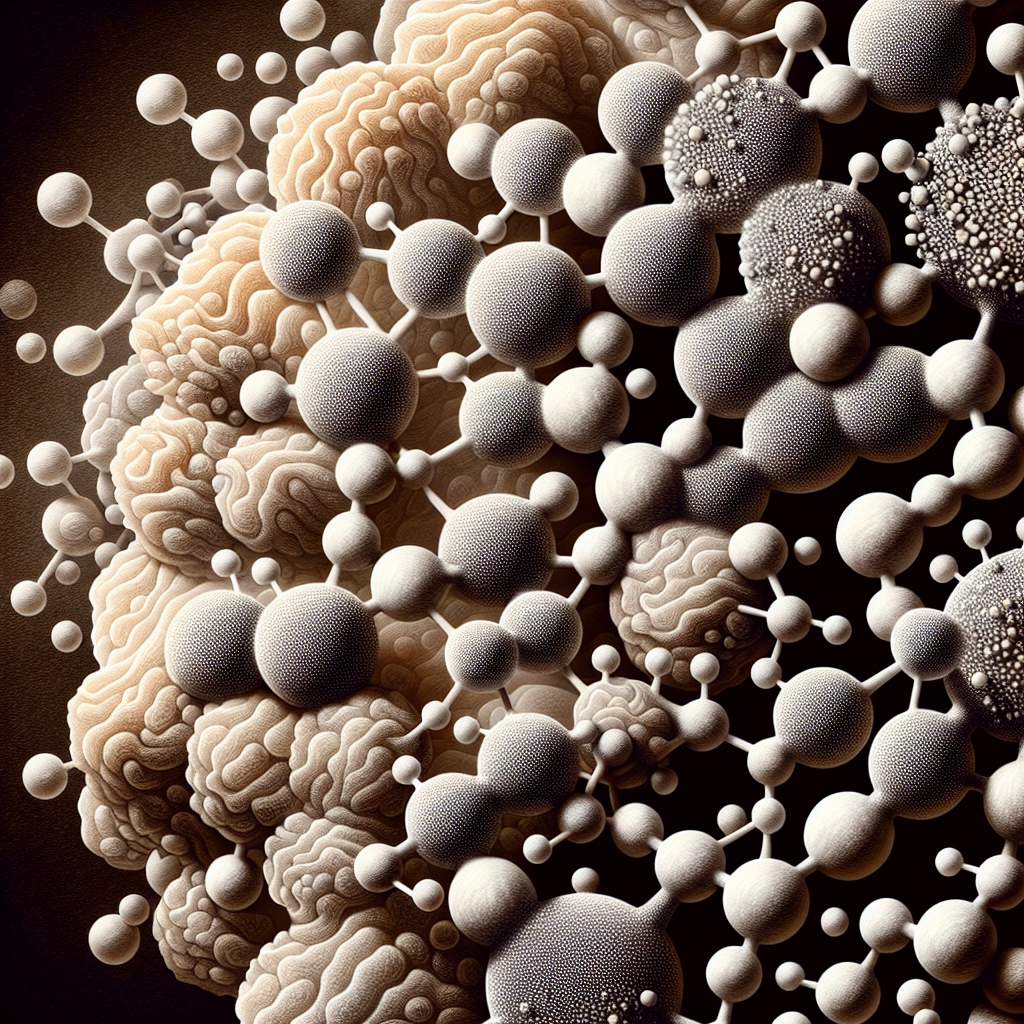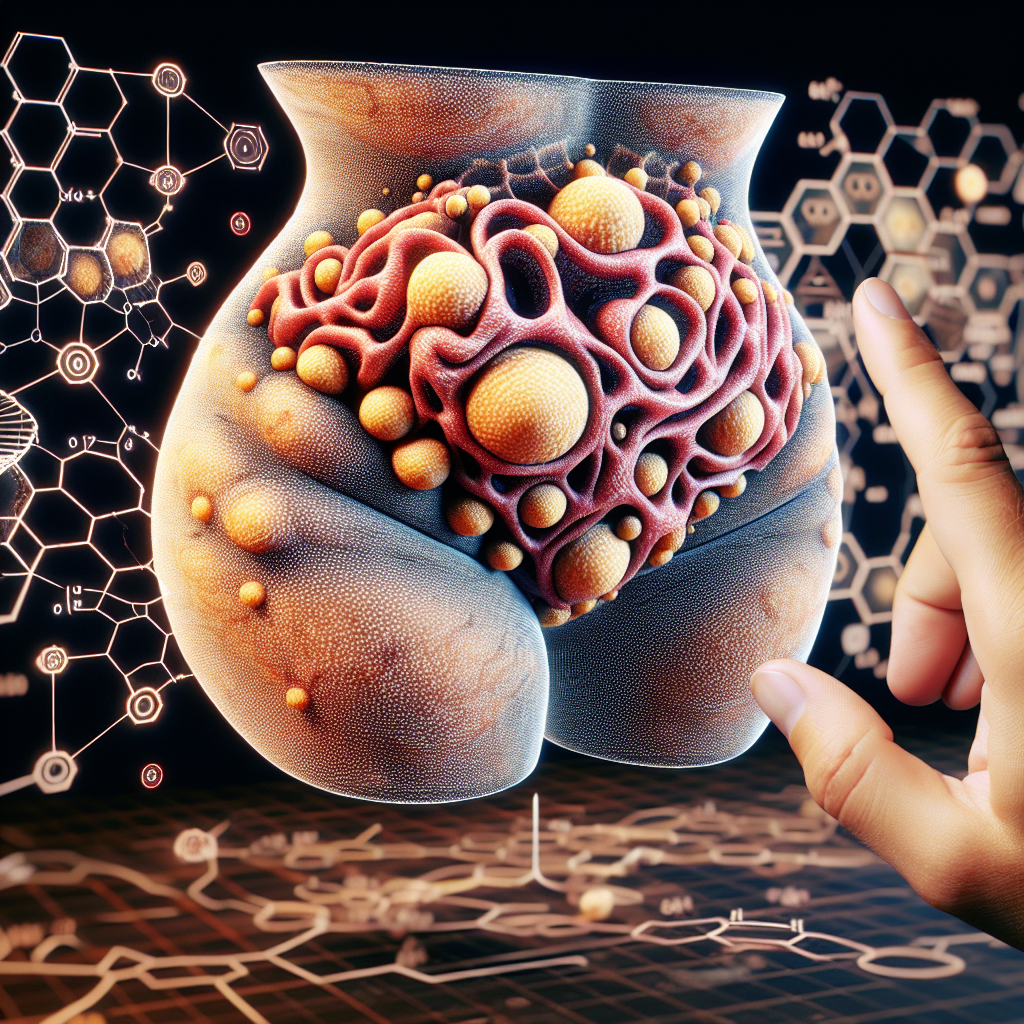Cellulite is a common cosmetic concern that affects many people, but what exactly is it and why does it form? Well, cellulite refers to the dimpled or lumpy appearance of the skin, often found on the thighs, buttocks, or abdomen. It occurs when fat deposits push through connective tissue beneath the skin, causing a rippled effect. While the exact cause of cellulite is not fully understood, factors such as genetics, hormones, lifestyle choices, and aging are believed to contribute to its formation. Despite being mostly harmless, cellulite can still have a significant impact on one’s self-esteem and body image. Therefore, people often seek answers on how to treat it and whether lifestyle changes, such as diet and exercise, can make a difference.
What is Cellulite?
Cellulite is a common condition that affects the appearance of the skin, especially in areas such as the thighs, buttocks, and abdomen. It is characterized by the dimpled or “orange peel” texture that can be seen on the surface of the skin. Although cellulite is not a serious medical condition, it is a source of concern for many individuals due to its cosmetic impact.
Definition of cellulite
Cellulite is essentially a structural issue that occurs beneath the skin. It occurs when fat deposits push and distort the connective tissue beneath the skin, resulting in a bumpy appearance. The fat cells are trapped within the fibrous bands of connective tissue, causing the skin to pucker and form dimples.
Characteristics of cellulite
Cellulite is commonly described as having a cottage cheese or orange peel texture. It can range in severity from mild to severe and may be more noticeable when the skin is pressed or squeezed. Cellulite can affect individuals of all body types and is not exclusive to those who are overweight. Even individuals who are relatively thin can have cellulite.
Common areas affected by cellulite
Cellulite tends to develop in areas of the body that have a higher concentration of fat, such as the thighs, buttocks, and abdomen. These areas are more prone to the accumulation of fat, which can contribute to the development of cellulite. However, cellulite can also occur in other areas of the body, such as the arms or calves, although it is less common.
Why does Cellulite Form?
Understanding the formation of cellulite involves considering various factors, including genetics, lifestyle choices, and hormonal influences.
Formation of cellulite
The formation of cellulite is a complex process that involves the interaction between fat cells, connective tissue, and the skin. Over time, fat cells may increase in size and number, leading to the expansion of fat deposits beneath the skin. As these fat deposits accumulate, they can push against the connective tissue, causing it to become rigid and inflexible. This, in turn, forces the skin to pucker and form the characteristic dimples associated with cellulite.
Factors that contribute to cellulite formation
Several factors can contribute to the development of cellulite. One of the primary factors is an excess accumulation of fat within the body. Individuals with a higher body fat percentage are more likely to have cellulite. Additionally, poor circulation and lymphatic drainage can also contribute to the formation of cellulite. When the circulatory and lymphatic systems are not functioning optimally, toxins and fluids can build up, further exacerbating the appearance of cellulite.
Impact of hormones on cellulite formation
Hormones play a significant role in the development of cellulite. Estrogen, in particular, has been implicated as a contributing factor. Estrogen can influence the distribution of fat in the body, favoring the development of cellulite in certain areas. Additionally, hormonal changes that occur during puberty, pregnancy, and menopause can also influence the formation and severity of cellulite.
What Causes Cellulite?
Cellulite can be caused by a combination of genetic, lifestyle, and hormonal factors. Understanding these causes can help individuals better manage and address their cellulite concerns.
Role of genetics in cellulite
Genetics plays a significant role in determining an individual’s susceptibility to developing cellulite. If your parents or other close relatives have cellulite, you may be more likely to develop it as well. Genetic factors can influence how your body stores fat and how your skin and connective tissue are structured.
Effect of lifestyle choices on cellulite
Lifestyle choices can also contribute to the development of cellulite. A sedentary lifestyle, poor diet, and smoking can all increase the likelihood of developing cellulite. Lack of exercise and an unhealthy diet can lead to weight gain and an increase in body fat, which can worsen the appearance of cellulite. Smoking, on the other hand, can reduce blood flow and impair collagen production, further contributing to the formation of cellulite.
Contribution of hormonal factors to cellulite
Hormonal factors, such as fluctuations in estrogen levels, can contribute to the development of cellulite. Estrogen can influence the distribution and storage of fat in the body, with a particular affinity for the thighs and buttocks. Hormonal changes during puberty, pregnancy, and menopause can exacerbate the appearance of cellulite in these areas. Additionally, hormonal imbalances or conditions such as polycystic ovary syndrome (PCOS) can also increase the likelihood of developing cellulite.
Is Cellulite Harmful?
Cellulite is generally not considered a harmful medical condition. However, it can have both health and cosmetic implications that individuals may find concerning.
Health risks associated with cellulite
Cellulite itself is not associated with any specific health risks. It is a purely cosmetic concern and does not pose a threat to physical well-being. However, the factors that contribute to the development of cellulite, such as weight gain, sedentary lifestyle, and poor circulation, can have negative effects on overall health. It is important to address these underlying factors to maintain optimal health.
Cosmetic concerns related to cellulite
The main concern for individuals with cellulite is its impact on appearance. Many people feel self-conscious or unhappy with the dimpled texture of their skin caused by cellulite. This can affect body image and self-esteem, leading to a decrease in confidence. The cosmetic concerns associated with cellulite can have a significant impact on an individual’s overall well-being and quality of life.
Can Diet and Exercise Reduce Cellulite?
Diet and exercise can play a role in managing cellulite and reducing its appearance. While they may not completely eliminate cellulite, they can help improve overall body composition and skin health.
Effectiveness of diet in reducing cellulite
A healthy diet can contribute to the reduction of cellulite by promoting weight loss, reducing body fat, and improving skin health. A diet rich in fruits, vegetables, lean proteins, and whole grains can help support weight loss efforts and reduce the accumulation of fat in the body. Additionally, a diet that is low in processed foods, saturated fats, and added sugars can improve circulation and promote the removal of toxins from the body.
Impact of exercise on cellulite
Regular exercise can help reduce the appearance of cellulite by increasing muscle tone and improving circulation. Strength training exercises that target the buttocks, thighs, and abdomen can help tone and firm the underlying muscles, making the skin appear smoother. Cardiovascular exercises, such as running or swimming, can improve circulation and stimulate lymphatic drainage, reducing fluid retention and promoting the elimination of toxins.
Importance of overall lifestyle changes
While diet and exercise can have a positive impact on cellulite, it is important to remember that they are just one aspect of a comprehensive approach to managing cellulite. It is crucial to adopt a holistic approach that includes other lifestyle changes, such as quitting smoking, staying hydrated, and managing stress levels. These changes can all contribute to overall skin health and help reduce the appearance of cellulite.
Are Women More Prone to Cellulite than Men?
It is widely recognized that women are more prone to cellulite than men. Several factors, including hormonal differences and structural variations, contribute to this gender disparity.
Gender differences in cellulite prevalence
Cellulite is more prevalent in women than in men. According to studies, approximately 80-90% of women develop cellulite at some point in their lives, while the occurrence is significantly lower in men. This difference in prevalence suggests that there are underlying factors related to gender that contribute to the development of cellulite.
Role of hormones in gender-specific cellulite
Hormonal factors play a significant role in the gender-specific development of cellulite. Estrogen, the primary female sex hormone, promotes the accumulation and redistribution of fat in the body, particularly in the buttocks and thighs. The unique hormonal profile of women makes them more susceptible to the formation of cellulite in these areas. Additionally, hormonal changes that occur during puberty, pregnancy, and menopause can exacerbate the appearance of cellulite in women.
Factors affecting cellulite in men
While cellulite is less common in men, it can still occur. Factors such as genetics, lifestyle choices, and hormonal imbalances can contribute to the development of cellulite in men. For example, men with a higher body fat percentage may be more prone to cellulite, as excess fat can push against the connective tissue and create dimples. Additionally, lifestyle choices such as poor diet, lack of exercise, and smoking can further increase the likelihood of developing cellulite in men.
How can Cellulite be Treated?
There are various treatment options available for cellulite, ranging from home remedies to medical procedures. The choice of treatment depends on the severity of cellulite and individual preferences.
Overview of treatment options
Treatment options for cellulite include topical creams, massage therapy, acoustic wave therapy, laser treatments, and surgical procedures. Topical creams typically contain ingredients that claim to improve circulation, stimulate collagen production, and reduce the appearance of cellulite. Massage therapy, such as manual lymphatic drainage or deep tissue massage, can help improve circulation and reduce fluid retention. Acoustic wave therapy uses sound waves to break down fat, while laser treatments aim to increase collagen production and tighten the skin. Surgical procedures, such as liposuction and cellulite reduction surgery, are more invasive options that can provide more significant results.
Comparison of home remedies and medical procedures
Home remedies for cellulite reduction include dry brushing, coffee scrubs, and the use of essential oils. These remedies are often more cost-effective and accessible than medical procedures but may provide limited results. Medical procedures, on the other hand, can be more expensive and may require multiple sessions, but they often yield more noticeable and long-lasting results. The choice between home remedies and medical procedures depends on individual preferences, budget, and the level of cellulite severity.
Effectiveness of various cellulite treatment methods
The effectiveness of cellulite treatment methods varies from person to person and depends on individual factors such as genetics, age, and overall health. While some treatments may provide temporary improvement in the appearance of cellulite, the long-term effectiveness of many treatments remains a topic of debate. It is important to have realistic expectations and consult with a healthcare professional to determine the most suitable treatment approach.
Does Losing Weight Eliminate Cellulite?
There is a common misconception that losing weight will eliminate cellulite. However, the relationship between weight loss and cellulite reduction is more complex than it may seem.
Misconceptions about cellulite and weight loss
It is important to understand that cellulite is not exclusively caused by excess weight or obesity. Even individuals with a healthy body weight can have cellulite. While losing weight can reduce the overall amount of fat in the body, it may not necessarily eliminate cellulite. Cellulite is influenced by factors such as the structure of the skin, distribution of fat, and the health of the connective tissue, which are not always directly related to body weight.
Impact of weight loss on cellulite appearance
Losing weight can potentially lead to a reduction in the appearance of cellulite. When body fat is reduced, the fat cells beneath the skin shrink, and the pressure on the connective tissue decreases. This can result in smoother-looking skin and a reduction in the visibility of cellulite. However, it is important to note that weight loss does not guarantee complete elimination of cellulite, as other factors such as skin elasticity and connective tissue structure can still contribute to its appearance.
Combining weight loss with other treatment approaches
While weight loss alone may not completely eliminate cellulite, it can be beneficial to combine weight loss efforts with other treatment approaches. By adopting a healthy diet and engaging in regular exercise, individuals can reduce overall body fat, improve muscle tone, and enhance skin health. This can contribute to a reduction in cellulite appearance and promote better overall body composition.

Are there any Effective Home Remedies for Cellulite?
Many individuals are interested in exploring home remedies for cellulite reduction as a more natural and cost-effective alternative to medical procedures. While home remedies may not provide drastic results, they can be a part of a comprehensive approach to managing cellulite.
Popular home remedies for cellulite reduction
Some popular home remedies for cellulite reduction include dry brushing, coffee scrubs, essential oils, and dietary changes. Dry brushing involves using a firm brush to massage the skin, which can stimulate circulation and remove dead skin cells. Coffee scrubs, made by combining coffee grounds with a carrier oil, are believed to increase blood flow and temporarily tighten the skin. Essential oils such as juniper, grapefruit, and rosemary are commonly used in massage or added to bath water to promote circulation and reduce fluid retention. Additionally, adopting a healthy diet that is low in processed foods, saturated fats, and added sugars can contribute to overall weight management and improved skin health.
Scientific evidence supporting home remedies
While some individuals swear by the effectiveness of home remedies for cellulite reduction, the scientific evidence supporting these claims is limited. Many home remedies have been studied primarily in small-scale or animal studies, making it difficult to draw firm conclusions. Additionally, the results of home remedies may vary significantly from person to person, depending on factors such as genetics and overall health. It is important to approach home remedies with realistic expectations and consult with a healthcare professional before starting any new treatment regimen.
Importance of consistency and patience
When it comes to home remedies for cellulite reduction, consistency and patience are key. Home remedies often require regular and persistent application to potentially see any noticeable results. It is essential to remember that cellulite may not disappear completely and that the goal should be to improve the overall appearance of the skin. It is advisable to give each home remedy a fair trial and adjust the approach as necessary based on individual preferences and results.
Is Cellulite More Common as You Age?
There is a common perception that cellulite becomes more prevalent and severe as individuals age. While age can be a contributing factor, the relationship between aging and cellulite is more complex than simply a linear progression.
Relationship between aging and cellulite
Cellulite can become more common as individuals age, primarily due to changes in the structure and elasticity of the skin. As we age, the collagen and elastin fibers that provide support to the skin gradually break down, leading to a loss of skin elasticity. This can result in the skin becoming thinner and less able to mask the underlying fat deposits, making cellulite more visible. Additionally, hormonal changes that occur during menopause can further exacerbate the appearance of cellulite.
Impact of skin elasticity on cellulite
Skin elasticity plays a crucial role in the visibility and severity of cellulite. When the skin is firm and taut, it can better mask the underlying fat deposits, resulting in a smoother appearance. However, as the skin loses elasticity with age, it becomes less able to retain its structure, and cellulite may become more apparent. Factors such as genetics, sun damage, and lifestyle choices can also influence the elasticity of the skin.
Prevalence and severity of cellulite with age
While cellulite can occur at any age, it does tend to become more prevalent and severe as individuals age. A combination of hormonal changes, decreased skin elasticity, and an increase in body fat percentage can contribute to the progression of cellulite. However, it is important to note that aging is not the sole determinant of cellulite, and addressing the other contributing factors, such as lifestyle and hormonal imbalances, is crucial for managing cellulite effectively at any age.
In conclusion, cellulite is a common condition that affects the appearance of the skin, particularly in areas such as the thighs, buttocks, and abdomen. It is characterized by the dimpled or “orange peel” texture that can be seen on the surface of the skin. The formation of cellulite involves the interaction between fat cells, connective tissue, and the skin. Factors such as genetics, lifestyle choices, and hormonal influences can contribute to the development of cellulite. Cellulite is not considered a harmful medical condition but can have both health and cosmetic implications. While diet and exercise can help manage cellulite, they may not completely eliminate it. Women are more prone to cellulite than men, primarily due to hormonal differences and structural variations. There are various treatment options available for cellulite, including home remedies and medical procedures, but their effectiveness varies. Losing weight may help reduce the appearance of cellulite, but it is not a guarantee. Home remedies for cellulite reduction can be a part of a comprehensive approach, but their efficacy is not scientifically proven. Cellulite can become more prevalent and severe as individuals age, primarily due to changes in skin elasticity and hormonal factors. It is important to have realistic expectations and consult with a healthcare professional for personalized advice on managing cellulite effectively.





